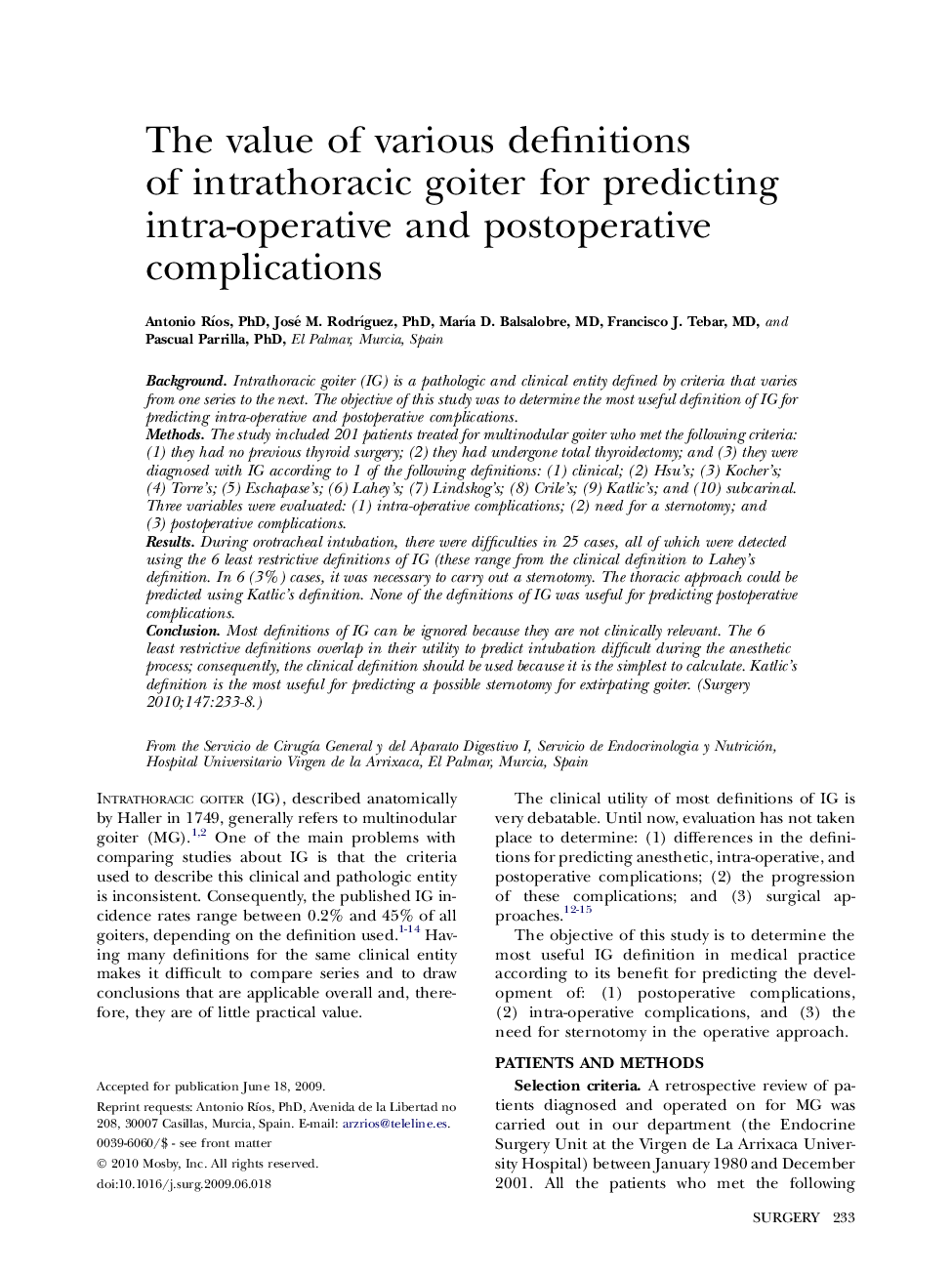| Article ID | Journal | Published Year | Pages | File Type |
|---|---|---|---|---|
| 4308005 | Surgery | 2010 | 6 Pages |
BackgroundIntrathoracic goiter (IG) is a pathologic and clinical entity defined by criteria that varies from one series to the next. The objective of this study was to determine the most useful definition of IG for predicting intra-operative and postoperative complications.MethodsThe study included 201 patients treated for multinodular goiter who met the following criteria: (1) they had no previous thyroid surgery; (2) they had undergone total thyroidectomy; and (3) they were diagnosed with IG according to 1 of the following definitions: (1) clinical; (2) Hsu's; (3) Kocher's; (4) Torre's; (5) Eschapase's; (6) Lahey's; (7) Lindskog's; (8) Crile's; (9) Katlic's; and (10) subcarinal. Three variables were evaluated: (1) intra-operative complications; (2) need for a sternotomy; and (3) postoperative complications.ResultsDuring orotracheal intubation, there were difficulties in 25 cases, all of which were detected using the 6 least restrictive definitions of IG (these range from the clinical definition to Lahey's definition. In 6 (3%) cases, it was necessary to carry out a sternotomy. The thoracic approach could be predicted using Katlic's definition. None of the definitions of IG was useful for predicting postoperative complications.ConclusionMost definitions of IG can be ignored because they are not clinically relevant. The 6 least restrictive definitions overlap in their utility to predict intubation difficult during the anesthetic process; consequently, the clinical definition should be used because it is the simplest to calculate. Katlic's definition is the most useful for predicting a possible sternotomy for extirpating goiter.
